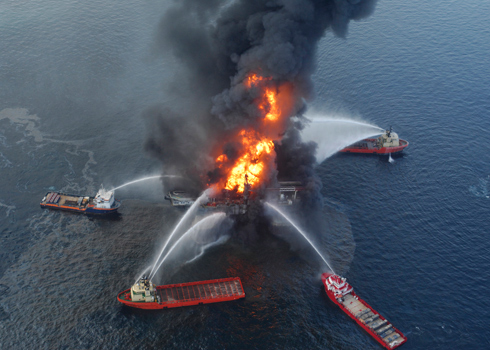The lead investigator for the presidential commission on the BP oil spill said today that Halliburton, and possibly BP, appears to have known the cement it was using in the Macondo well was unstable.
In a letter to the commission (PDF), Fred Bartlit wrote that Halliburton had conducted four lab tests of the formula for the cement. Two tests in February showed the slurry would be unstable, and Halliburton apparently gave the results of one of those tests to BP. Another test in April also showed it would be unstable; those results weren’t shared with BP, Bartlit wrote. A fourth test, also in April showed the cement would be stable. But, Bartlit writes, “Halliburton may not have had — and BP did not have — the results of that test before the evening of April 19,” when rig workers began pumping the cement into the Macondo well. The well blew on April 20.
If the cement had worked, it may have prevented the oil spill.
But, Bartlitt cautions, it’s not so simple.
We want to emphasize that even if our concerns regarding the foam slurry design at Macondo are well founded, the story of the blowout does not turn solely on the quality of the Macondo cement job. Cementing wells is a complex endeavor and industry experts inform us that cementing failures are not uncommon even in the best of circumstances. Because it may be anticipated that a particular cement job may be faulty, the oil industry has developed tests, such as the negative pressure test and cement evaluation logs, to identify cementing failures. It has also developed methods to remedy deficient cement jobs.
BP and/or Transocean personnel misinterpreted or chose not to conduct
such tests at the Macondo well.









